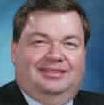Students as Partners Approach
During my recent trip to Australia in October 2019, I attended the National Centre for Peer Assisted Study Sessions (PASS) and Peer Learning Conference. I listened to presentations by professional staff members and student peer leaders from across Australian higher education institutions. I learned how “peer learning” has expanded more holistically beyond academic support programs into student orientation, mental health outreach, and many other areas critical for students to succeed academically, personally, and professionally. I began to hear more about “students as partners” (SaP) as a distinct theoretical framework for expanding peer learning into multiple dimensions and treating students — both participants as well as student leaders — as full partners in creation or and delivery of the peer learning programs and as equal partners with the professional staff and the faculty members. I discovered SaP had originated in Australia, Canada, and the U.K. and just recently expanded to a few institutions in the U.S. Obviously, my surprising discovery of SaP was due to not getting outside of my own comfort zone and both reading and traveling more widely. And listening more closely to my students. I will maintain a new web page (http://z.umn.edu/studentsaspartners) to identify what I am learning about SaP. All I can say at this point it is as though a veil has been lifted from my eyes and I see the possibilities for transformation. For now, I am in the learner mode and will reserve more comment when I better understand SaP.

